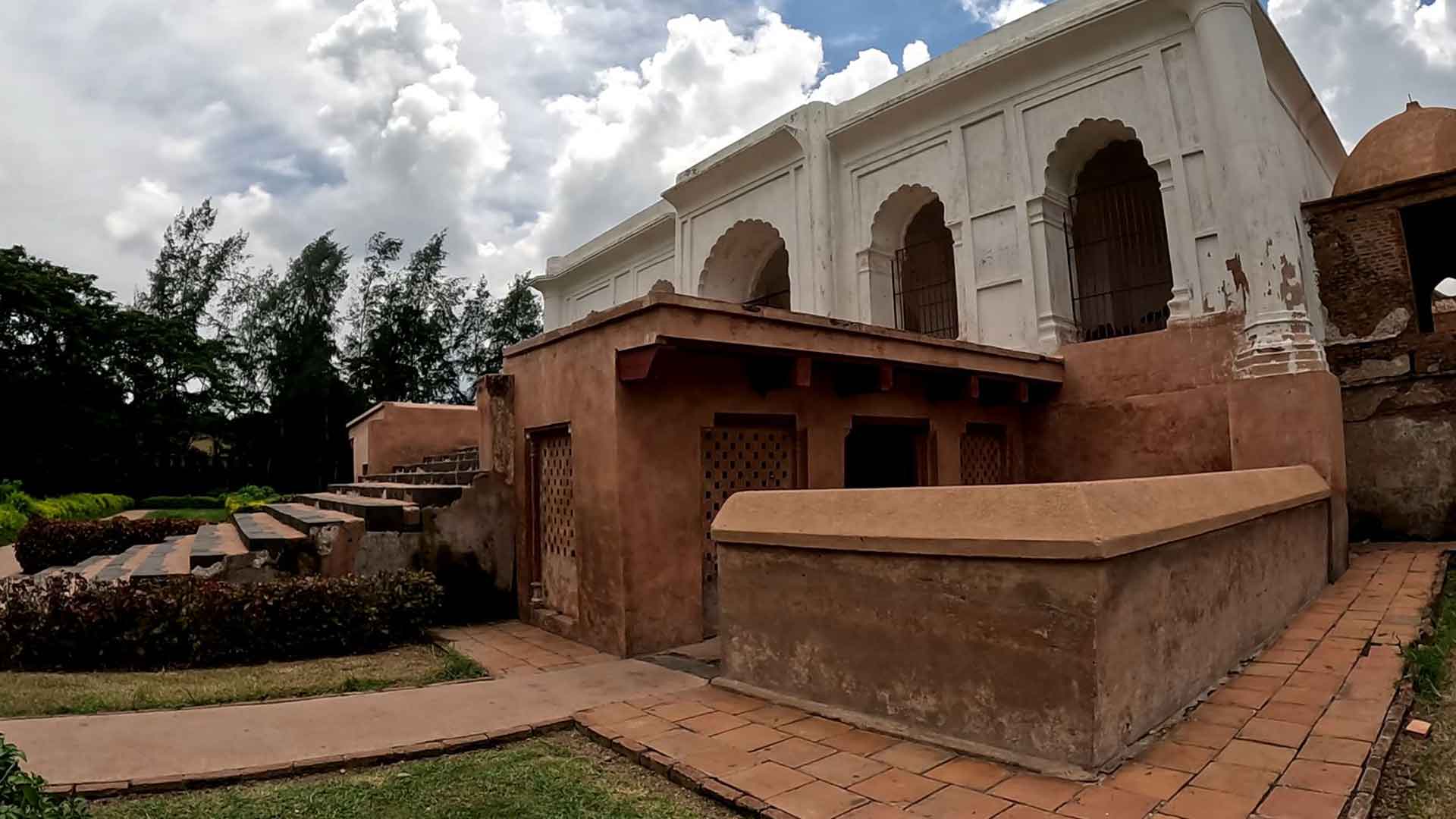After the death of Emperor Aurangzeb in the 18th century, the foundations of the Mughal Empire were shaken to the core by power struggles and political strife. A major change was achieved in the political scene of many regions including Bengal. As part of this, independent Nawabi rule was established in the Subah of Bengal. Originally, the rulers of the subahs were called subedars or nazims. The word nawab is derived from the word nazim.
These Nawabs, approved by the Mughal emperors, could independently administer the affairs of the subah. Murshid Quli Khan founded the Nawab regime in Bengal. In 1717 he assumed responsibility as the first independent Nawab of Bengal. A new chapter was written in the history of Bengal by his hands.
So, on a trip to Murshidabad, I had an ardent desire to see the grave of Murshid Quli Khan. I set out early in the morning for the Katra mosque. I traveled by horse-drawn carriage. Nothing was eaten in the morning. So, when I saw the tea shop, I went down. After a light breakfast, I headed towards the nearby Kathgola Palace.
There are two opinions on why the place was named ‘Kathgola’. There were wooden balls on both sides of the road. Many believe that this name came from there. The garden is also famous for its flowers. Among the various flowers here, the name rose was spread everywhere. Many believe that the garden got its name Kathgola from the word ‘Kathgola’.
I left the Kathgola Palace and headed towards my desired destination. The village is as beautiful as the picture. There is no noise. Nawabs used to ride horses on this road at one time. Thinking about it, I felt a different feeling in my mind.
After some time, I reached Katra Mosque. Murshid Quli Khan is sleeping eternally under this mosque.
The mosque is quadrangular in shape. Two towers stand tall on both sides. Its height is about 70 feet. And its width is 20 feet. It is known that there were four towers around the mosque. Two have been destroyed. The mosque has five arched entrances. The middle one is large. There is a mehrab on the other side of the main door. There are smaller mehrabs on the right and left. There were three domes in this empty part above. Which was destroyed in the earthquake of 1897. The white clouds flying through the gaps of the broken domes are beautiful to see. The raft of floating clouds is telling us that this is how time passes.
He was buried here as per the wishes of Murshid Quli Khan. He was repentant for his sins in life. Therefore, he wanted his grave to be in a place where the feet of pious people entering the mosque could touch him.
There are several opinions about the birth of Murshid Quli Khan. However, one of the most widely accepted opinions is that he was born in approximately 1660 into a Brahmin family in the Deccan Plateau. At birth, his name was Surya Narayan Mishra. The family’s financial situation was not favorable. At the age of just ten, he was purchased by a Mughal official named Haji Shafi Ispahani and raised as his own son. There he converted to Islam. He was named Mohammad Hadi.
Haji Shafi arranged for Hadi’s education. He was sent to faraway Persia for better education. He stayed in Persia until the death of his guardian Haji Shafi. Then he returned to India in 1696.
Emperor Aurangzeb sent Mohammad Hadi to Bengal as Diwan in 1700 with the honorary title of ‘Kartalab Khan’. After receiving the new responsibility, he came to Dhaka with his own army. It did not take him long to gain the confidence of the emperor by demonstrating his competence in revenue and economic administration. He was honest and very loyal to the emperor. But to protect the royal interests, a dispute arose with the Nazim of Bengal and the emperor’s grandson, Azim-e-Shan. As a result, at one point, Karatalab Khan’s life was threatened. With the intervention of the emperor on the same basis, fair justice was given to him. In 1702, the emperor allowed him to transfer his office to Maqsudabad on the banks of the Ganges.
Due to a dispute with Karatalab Khan, the emperor sent Azim-i-Shan to Patna. He ordered him to rule the province through a Naib. Karatalab Khan’s tireless efforts increased the revenue of the state. Then in 1703, he went to the Deccan to meet the emperor. At that time, he was given the title of Murshid Quli Khan and appointed as the Subadar of Orissa due to his efficiency. On the other hand, he also received the Diwani of Bengal-Bihar-Orissa. Later, Murshidabad was renamed Murshidabad after his name. He moved the capital from Dhaka to the banks of the Bhagrathi River.

